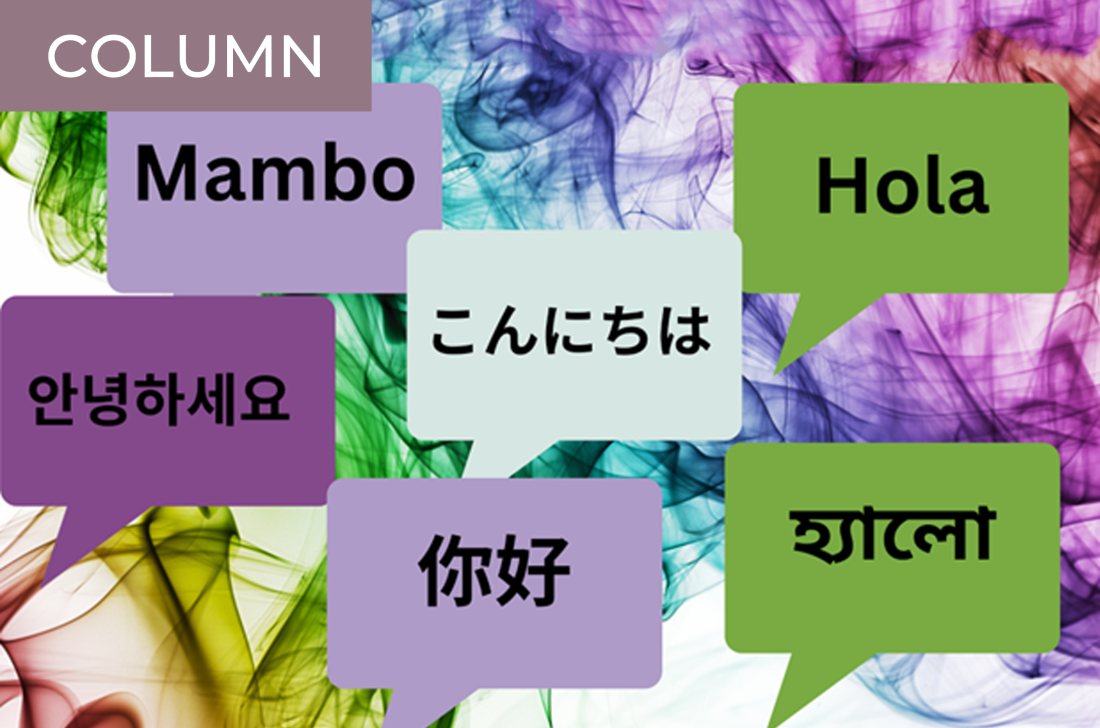Many people are surprised when I tell them that I know six languages: English, Japanese, Spanish, Mandarin Chinese, Bengali, and Swahili. (I’m also working on my seventh, Korean.) This is especially so since none of my languages are in the same language family (like Spanish, French, and Italian would be). Plus, they’re some of the hardest languages to learn for native English speakers, according to the US government’s Foreign Service Institute!
There’s no doubt that these languages were generally not easy to learn, but learning Japanese as my first foreign language helped me learn different languages. Actually, the more languages you learn, the easier it is to learn the next one. Let me explain my case.
How Japanese Helped Me Learn Chinese (Mandarin)
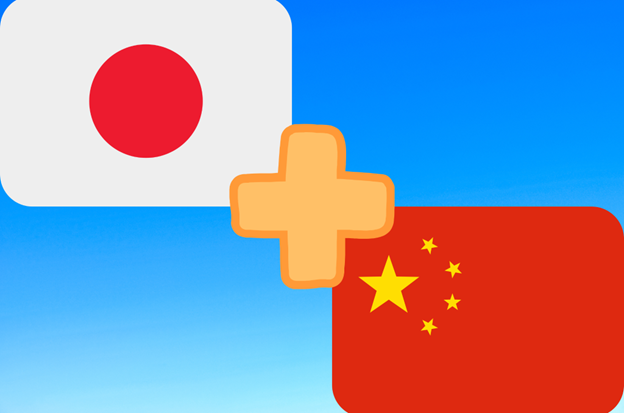
This answer may not surprise many readers, but studying Japanese helped me learn Chinese mostly because of the kanji (or “hanzi” in Mandarin) transfer. Japanese and Chinese grammar and pronunciation are wildly different, but the Japanese writing system evolved from Chinese. Japanese also adopted many Chinese words, called kango (漢語). So by the time I started learning Chinese, I had already memorized how to write and the meanings of over a thousand Chinese characters. I was familiar with a lot of words because of the kango. All I had to do was remember the new pronunciations and word combinations for many kanji.
Of course, there wasn’t a complete language transfer. There is more overlap between Japanese kanji and traditional hanzi, while most Mandarin students learn simplified characters. In addition to kanji, Japanese also uses hiragana and katakana and has way more pronunciations for each kanji than Mandarin. Chinese is purely kanji, and I had to learn many more than what I needed for Japanese. I also had to be cautious of kanji false friends–words that look the same in both Japanese and Mandarin but have very different meanings. But overall, learning to read and write Japanese provided a huge benefit when learning Mandarin.
How Japanese Helped Me Learn Bengali
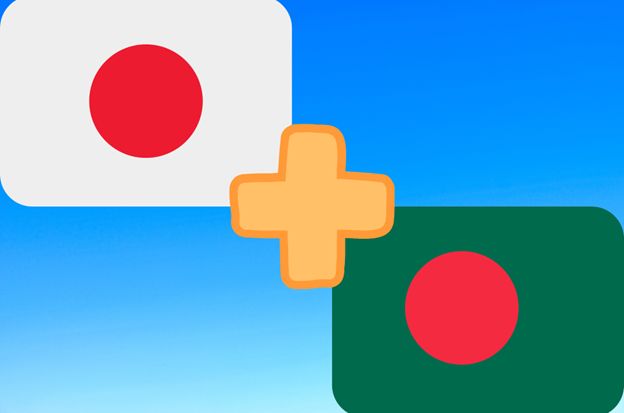
This one may be a bit more surprising. Are Bengali and Japanese related? Not at all, even though they’re both Asian languages. Actually, Bengali is a very distant relative of English! (Here’s a cool language tree showing how.) The language transfer between Japanese and Bengali is just a happy coincidence.
As it turns out, Japanese and Bengali grammar are quite similar. Both are generally subject-object-verb languages, although both treat this order with some flexibility. (In contrast, English is a subject-verb-object language with a fairly rigid sentence structure.) To make a question in Bengali, you either change the intonation or add the question marker ki to the sentence–similar to Japanese, which uses ka instead. Whereas English uses relative clauses (“the person who ate the apple”) after the nouns they describe, Japanese and Bengali usually put them before the noun.
In an indirect way, learning to read and write Japanese first made it easier to learn how to read and write Bengali. This is because, while I think the Japanese writing system is absolutely fascinating, I also think it’s one of the most difficult to learn (for many of the reasons described above). Learning Bengali was not a cakewalk, but it was relatively easy compared to Japanese. Bengali is mostly a phonetic alphabet, but there are a lot of letter combinations that are irregular. You just need to memorize them. But what are about 100 common phonetic letter transformations in Bengali compared to the thousands of kanji to study in Japanese? Not that big of a deal.
How Japanese Helped Me Learn Spanish and Swahili
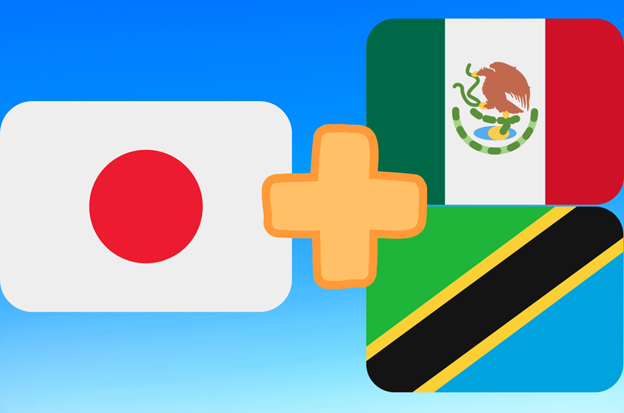
Right, so you may be first wondering why I grouped two very different languages together for this next section. This is because the language transfer Japanese offered me was much more indirect for Spanish and Swahili than it was for the other two languages I already talked about. Japanese offered me what I call “brain flexibility.”
Spanish was the next foreign language I started learning after Japanese, and I mostly learned it in school during my teenage years in the US. I’m from a part of the US that doesn’t have much ethnic or cultural diversity, so most of my peers were monolingual. The joking stereotype about Spanish there is that it is practically the same language as English–just add an “o” to the end of the word to make it Spanish. (Righto?) You can imagine the dismay many fellow students had when they took Spanish classes and discovered that, while relatively similar to English (compared to Japanese), Spanish is its own language. It has different vocabulary, spelling, and grammar rules. “But why does Spanish do that [because English doesn’t]?!” was a common refrain. So many students struggled because they didn’t have the “brain flexibility.”
My experience with Swahili was similar. Swahili was the last language I studied to a conversational level, so by the time I started, I was a language-learning veteran. My brain was far more flexible than it was when I was on my Spanish journey. This was useful because Swahili wasn’t like any other language I’d studied before. “But why does Swahili do that [because English doesn’t]?!” some of my fellow learners asked. But at that point, I had just stopped asking. Swahili does as Swahili does–because it’s not English. Like Japanese, it’s a very logical and interesting language. It just isn’t logical to an English brain.
How Japanese is Helping Me Learn Korean
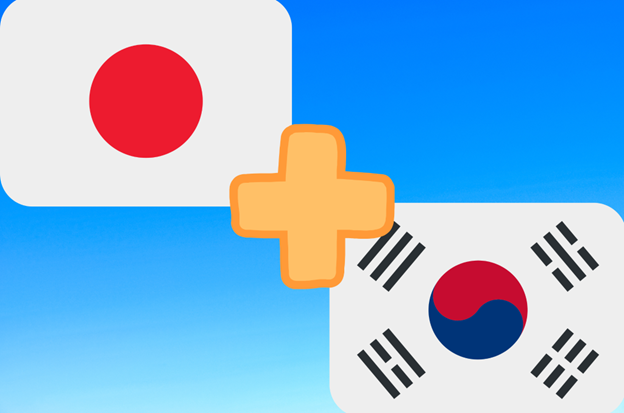
To finish off, I’d like to share how Japanese is currently helping me learn Korean. Like Mandarin, the language transfer here may be quite well-known to you. I knew before I started learning Korean that, while they’re not related, Korean is the only major language that can be translated word-for-word into Japanese and still make sense (and vice versa). Subject-object-verb word order, honorifics, multiple counting systems, particles, subject omission… What Japanese does grammatically, Korean basically does too–although it is fascinating to find what “twists” Korean has relative to Japanese. For example, often, where Japanese has one particle, Korean has two–Japanese ga equates to Korean i or ga. Casual Japanese omits some particles, but Korean omits them seemingly all the time.
The cherries on the top are that, like Japanese, Korean took a lot of vocabulary from Chinese, so some words sound familiar. The Korean alphabet is also phonetic and a breeze to learn, but knowledge of kanji sometimes helps. I’m sure I’ll have more to say as I progress!
Has Japanese helped you learn other languages? I’d love to hear about your experiences, so drop us a comment below!

